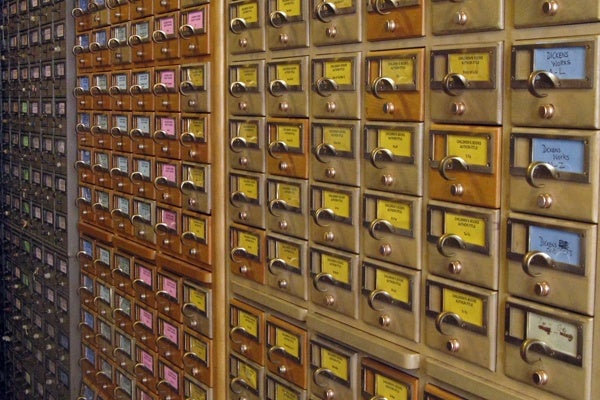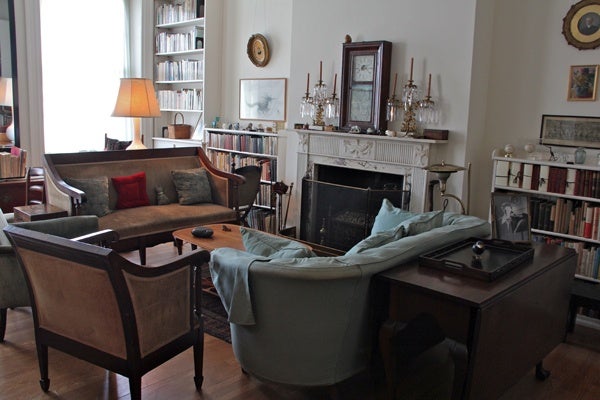Philadelphia’s Free Library and Rosenbach a rare, perfect match
For literary Philadelphia, it is as exciting as Leopold Bloom proposing to Miss Havisham would be. The Rosenbach Museum and Library intends to merge by June 30 with the Free Library of Philadelphia to form one of the largest rare book collections held by a public library in the United States.
The following is a work of opinion submitted by the author.
For literary Philadelphia, it is as exciting as Leopold Bloom proposing to Miss Havisham would be. The Rosenbach Museum and Library intends to merge by June 30 with the Free Library of Philadelphia to form one of the largest rare book collections held by a public library in the United States.
Though the Rosenbach, 2008-2010 Delancey Place, and the Free Library’s Rare Book Department, 1901 Vine Street, will maintain separate residences, the Rosenbach will take a new name, becoming the Rosenbach of the Free Library of Philadelphia Foundation.
If the union surprised anyone, a close examination reveals its inherent logic, as well as a history that foreshadowed the match. Unified, the world-class collection will comprise rare books and documents, decorative and fine arts, illustration and art on paper, as well as literary correspondence and memorabilia.
Made for each other
The Free Library collection, the smaller of the two, consists of 100,000 rare books and manuscripts, including 4,000-year-old cuneiform-inscribed clay tablets and more than 800 incunabula, books printed before 1501.
The collection also contains a tantalizing array of objects and personal papers that reveal authors’ interior lives. Charles Dickens’ pet raven, said to be the inspiration for Edgar Allen Poe’s poem, is preserved in inky grandeur under glass. The Rare Book Department has extensive holdings from both men.
“We have the third largest collection of Dickens’ letters in the world — more than 1,100,” says Department Head Janine Pollock, “as well as his desk and ephemera that include his postage scale, card case, and a carriage lantern that he used while making edits in the stagecoach en route to his public readings. For Poe, we have every original appearance of his work, in addition to the handwritten manuscript of The Murders in the Rue Morgue used by the printer. We also hold copies of The Raven and Annabel Lee in Poe’s hand.”
At the Rosenbach, 330,000 rare books and manuscripts, and 20,000 works of art on paper are preserved, as well as silver, paintings and period furniture. It too has a large Dickens collection, as well as Bram Stoker’s handwritten notes for Dracula. It has one of only 11 existing copies of the Bay Psalm Book, the first book printed in the American colonies, an exquisite complement to the religious texts that are among the Free Library’s large group of illuminated manuscripts.
A spirit of collaboration
Merging will create economies of scale in staffing and administration, relieving the Rosenbach of responsibility for operating expenses, and providing increased marketing and development resources. In addition, Pollock adds that each institution will benefit from exposure to the other’s patrons and visitors.
“Our collections dovetail in so many ways,” says Derick Dreher, John C. Haas director of the Rosenbach. “Our mission statements are very similar and our programmatic aspirations nearly identical.”
Having an opportunity to do collaborative programming, to develop joint exhibitions and share collections, excites curators in both locations. “Both institutions pride themselves on …intensive, interactive programming that allows visitors to be engaged and inspired by what they see,” says Dreher. “We are not content to merely preserve collections.”
“We have a massive collection of Shakespeare,” Dreher says, “hundreds of early imprints of the individual plays, collected volumes, even contemporary forgeries. The FLP has a much smaller, but very refined, collection that includes the one major piece we’re missing: the so-called First Folio of 1623. Together the two collections will be one of the most important Shakespeare holdings anywhere.”
Together through history
Children’s literature and illustration will also be a major presence in the combined collection, covering the 17th century to the present, and may be among the first areas exploited for a combined exhibit.
Interestingly, each institution played a role in the other’s juvenile holdings. In 1947, Dr. A.S.W. Rosenbach presented his 18th and 19th century children’s collection to the Free Library. Years later, the library returned the favor, directing author and illustrator Maurice Sendak to the Rosenbach to view the Herman Melville holdings. Sendak’s visit began a relationship that led him to entrust his original drawings to the Rosenbach.
There are many such connections. Dreher remarks that Beatrix Potter was a significant influence on Sendak’s work, and the Free Library’s Rare Book Department has one of the largest Potter collections in the United States. “These two collections obviously augment each other beautifully,” he says.
The Free Library also preserves the work of illustrator Kate Greenaway, has a strong representation of European children’s books, and holds the American Sunday-School Union Collection, a wide-ranging series of work from a prolific 19th century publisher. Meanwhile, the Rosenbach has the largest Lewis Carroll collection in the nation.
The Free Library created the Rare Book Department in 1949. Even before the merger, it is one of the largest collections in a public library in the country. Familiar Philadelphia names echo through the holdings. P.A.B. Widener established the collection with a gift of 500 incunabula. Col. Richard Gimbel, son of the department store founder, donated his Poe collection. The papers of native son Ed Wynn, who gained fame as an actor and comedian, are here. The bequest of William McIntyre Elkins included extensive collections of Oliver Goldsmith, Dickens and Americana, as well as the elegant paneled library from his estate, which was reconstructed at Parkway Central. And fittingly, the name Rosenbach was closely connected to the Free Library long before the establishment of the library and museum on Delancey Place.
From 1903 to 1953 Rosenbach and his brother Philip operated the Rosenbach Company, an antiquarian book business. As a dealer, he advised private collectors on book purchases, and many of these volumes ultimately found their way into the Free Library. Rosenbach also served as a library board member for 30 years, until his death in 1953. The Rosenbach opened the following year.
Acquisitions run to strength
The collections continue to grow, but selectively. “We have limited space,” explains Pollock of the Free Library, “but we add specific items in areas in which we already have strength. For example, we have one of the largest collections of editions of the Roman poet Horace in the world, so if something becomes available, we would likely pursue it.”
New acquisitions are financed with proceeds from their $3 million Rare Book endowment. “Sometimes we save up for several years to make an important purchase,” Pollock explains.
The Rosenbach has a dedicated fund for new items, and Dreher says that annual acquisition expenditures vary widely: “Some years we spend next to nothing, and other years we make expenditures in the six-figure range. This practice allows us to respond to discoveries on the art market.”
Purchases are recommended by the Rosenbach’s curator and approved or declined by a board committee. The Rosenbach also occasionally sells or gives items away for curatorial purposes. No deaccessions are planned as part of the merger, Dreher adds.
Though unexpected at first glance, the match between the Free Library and the Rosenbach seems natural after closer consideration. By combining, they are better prepared to preserve a world-class collection of artistic, intellectual and historic treasure. They are unique, yet complementary, bookends.
WHYY is your source for fact-based, in-depth journalism and information. As a nonprofit organization, we rely on financial support from readers like you. Please give today.












